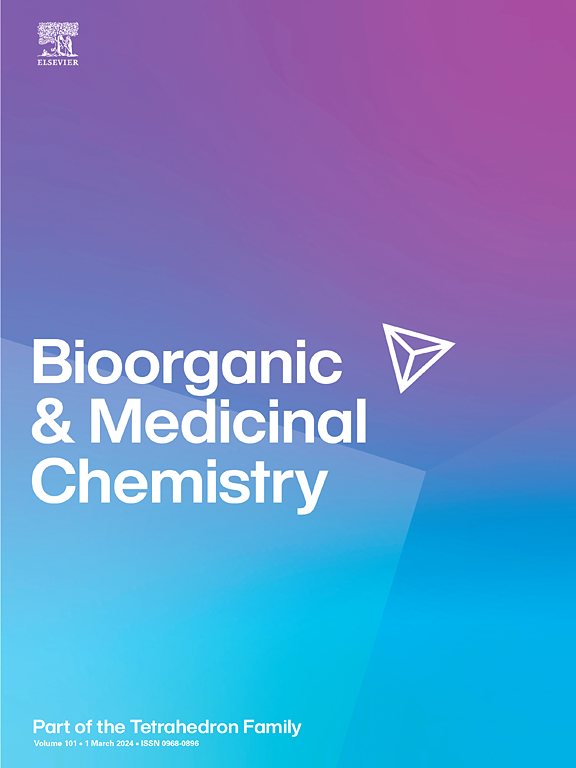Design, synthesis and biological evaluation of benzo[b]thiophene analogues as novel ferroptosis inhibitor that inhibit fibrosarcoma cell proliferation
IF 3.3
3区 医学
Q2 BIOCHEMISTRY & MOLECULAR BIOLOGY
引用次数: 0
Abstract
While apoptosis activation has traditionally been considered as an anti-cancer mechanism, current research points to ferroptosis stimulation as a potentially effective cancer therapy. Glutathione peroxidase 4 (GPX4), an essential antioxidant enzyme, serves as a negative regulator of ferroptosis, and its targeted inhibition or degradation can efficiently induce this process. In this study, a potent ferroptosis inducer III-4 that bearing a benzo[b]thiophene moiety was developed by employing a sequential structure optimization process based on RSL-3 to inhibit cancer cells proliferation. At the same time, this cytotoxic activity could be reversed by ferroptosis inducer Fer-1, suggesting that III-4 functions as a ferroptosis inducer. The structure–activity relationship (SAR) of these compounds was also explored. At the cellular level, compound III-4 could block the generation of GSH, cause the accumulation of ROS and MDA, down-regulate GPX4 level, and finally trigger the Fe2+-mediated ferroptosis in HT1080 cell lines. Further biological investigation revealed that III-4 arrested the cell cycle at the S phase and inhibited HT1080 cell lines migration. These results indicated that compound III-4 is a candidate for the identification of novel ferroptosis inducer for fibrosarcoma cells.

求助全文
约1分钟内获得全文
求助全文
来源期刊

Bioorganic & Medicinal Chemistry
医学-生化与分子生物学
CiteScore
6.80
自引率
2.90%
发文量
413
审稿时长
17 days
期刊介绍:
Bioorganic & Medicinal Chemistry provides an international forum for the publication of full original research papers and critical reviews on molecular interactions in key biological targets such as receptors, channels, enzymes, nucleotides, lipids and saccharides.
The aim of the journal is to promote a better understanding at the molecular level of life processes, and living organisms, as well as the interaction of these with chemical agents. A special feature will be that colour illustrations will be reproduced at no charge to the author, provided that the Editor agrees that colour is essential to the information content of the illustration in question.
 求助内容:
求助内容: 应助结果提醒方式:
应助结果提醒方式:


